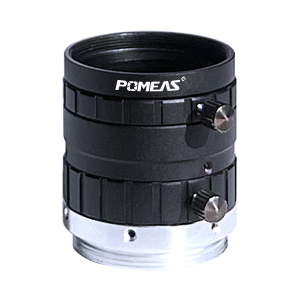The vision inspection lens is a key hardware component in the machine vision inspection system, playing a role similar to the ‘eyes’. It converts the image information of the object surface into electrical signals, enabling the computer to process and analyse the information. The lens usually consists of a set of lenses that can be adjusted in focal length and aperture to suit different inspection needs.


Visual inspection lenses are categorised by function:
Fixed Focus Lens vs Zoom Lens
Fixed-focus lens:the focal length is fixed and non-adjustable, suitable for fixed working distance and field of view range of the detection task.
Zoom lens:the focal length can be adjusted, flexible operation, able to adapt to a variety of different working distance and field of view range of the detection needs.
Manual Iris Lenses vs Auto Iris Lenses
Manual aperture lens:the aperture needs to be adjusted manually, suitable for relatively stable light conditions or need to accurately control the aperture size of the scene.
Automatic aperture lens:the lens can automatically adjust the aperture according to the ambient light, to ensure that in different light conditions can obtain a clear image, improve the stability and efficiency of detection.
Standard resolution lenses vs. high resolution lenses
Standard Resolution Lens:suitable for general monitoring, quality inspection and other general imaging needs.
High resolution lens:suitable for precision inspection, high-speed imaging and other applications with high resolution requirements, capable of capturing more subtle image details.
Lenses by Sensor Size
Depending on the size of the sensor used in conjunction, vision inspection lenses can be categorised as small sensor format lenses, medium sensor format lenses and large sensor format lenses to suit the needs of different sensor sizes.
Monochrome imaging lenses and colour imaging lenses
Monochrome imaging lens:can only capture black and white images, suitable for inspection tasks that do not require high colour information.
Colour imaging lens:can capture colour images, providing richer image information, suitable for inspection tasks that need to analyse the colour of objects.
Special function lenses
Lenses such as low distortion lenses (which reduce the impact of distortion on image quality and are suitable for application scenarios that require precise measurements), anti-vibration lenses (suitable for industrial environments with high vibration), etc., have specific designs to meet specific inspection needs.
Visual inspection lenses can be divided into various types according to different functions to meet different application scenarios and inspection needs. When choosing a visual inspection lens, you need to consider the actual application scene, detection accuracy, working environment and other factors.
Product recommendation
TECHNICAL SOLUTION
MORE+You may also be interested in the following information
FREE CONSULTING SERVICE
Let’s help you to find the right solution for your project!


 ASK POMEAS
ASK POMEAS  PRICE INQUIRY
PRICE INQUIRY  REQUEST DEMO/TEST
REQUEST DEMO/TEST  FREE TRIAL UNIT
FREE TRIAL UNIT  ACCURATE SELECTION
ACCURATE SELECTION  ADDRESS
ADDRESS Tel:+ 86-0769-2266 0867
Tel:+ 86-0769-2266 0867 Fax:+ 86-0769-2266 0867
Fax:+ 86-0769-2266 0867 E-mail:marketing@pomeas.com
E-mail:marketing@pomeas.com
